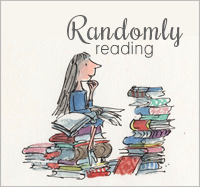I've been exploring stories about immigrants and refugees with my young readers and I thought I would share the books we have read with you. I chose these for their variety and to give the kids a well-rounded appreciation for the reasons people need to leave their homeland and the kind of courage it takes to start over again in a strange place, no matter what your age is. I hope you find them as interesting and as informative as we did.
Gittel's Journey: An Ellis Island Story written by Leslèa Newman, illustrated by Amy June Bates
Abrams BFYR, 2019, 42 pages
When living in their small Jewish Eastern European village is no longer safe for Gittel and her mother, they decide to emigrate to the United States, where Mama's cousin Mendel lives. When an eye infection prevents Mama from boarding the ship to the US, she decides to send Gittel alone. Clutching Cousin Mendel's address, scared and along, Gittel makes the crossing, but by the time she reaches New York, the ink on the paper has rubbed away and no one read the address. Luckily, a kind Yiddish interpreter and a photographer have an idea about how to unite Gittel with Cousin Mendel.
This is a lovely story that highlights the bravery of children (or for that matter, anyone) leaving their home and traveling far despite the difficulties for a better life in America. Gittel's Journey is based on two true stories from the author's family (see the Author's Note). The watercolor illustrations are done in subtle browns, yellows and blues, with Gittel and her mother the only full color figures throughout. The illustrations and Newman's expressive text are frames in woodcut designs, giving the book an old-fashioned, yet timeless, feel. Back matter includes a Yiddish Glossary, and a Bibliography.
Candlewick Press, 2018, 32 pages
The day war came begin like any other day, the young narrator tells us. First breakfast with her family, then school. But the war arrives just after lunch, full of smoke, fire and noise, turning everything to rubble, including the narrator's home and happy family. Walking alone, the narrator follows a crowd of other refugees, eventually arriving in another country. Living in a hut with other refugees, the narrator quickly realizes that war has taken hold of her, and everywhere she goes, she is told there is not place for her, even in the local school. But just as she sinks into overwhelming despair, a knock on the door, a young boy proves to be just what she needs - acceptance and place to belong. This powerful free verse poem captures so poignantly the heartbreak of war, the desolation of loss, and of finding yourself alone in the world as an unwanted refugee so well through the eyes of a young girl. The color pencil and watercolor illustrations are simple yet sensitive and child-friendly, reflecting the vulnerability of the narrator (and all people impacted by war) throughout. It is a story that will hopefully accomplish what the author set out to do: "remind us all of the power of kindness and its ability to give hope for a better future."
You can download a discussion guide for The Day War Came from the publisher HERE
My Name is not Refugee written and illustrated by Kate Milner
The Bucket List, 2017, 32 pages
A young boy and his mother talk about the journey they are about to take because their homeland is no longer safe for them. She tells him they will be leaving old friends and to think about what to pack, and the long journey ahead of them by foot, the people they will meet, the things they will see. After the journey, she explains, they will sleep in strange places, hear strange words, eat different food until they finally have a home again and begin to understand things in their new country. And, she tells him, that he will be called refugee, but to remember that his name is not refugee. What's different about this book is that they haven't left on their long journey yet, so that at each juncture talked about, readers are also prompted to think about what they would do if they were about to go on the same trip, making this an interactive book that puts the reader into the shoes of a refugee, making the experience more realistic for them when they need to consider something like what to take and what to leave behind. The illustrations are simple and expressive.
A teacher's guide is available from the publisher that can be downloaded HERE
Calling the Water Drum by LaTisha Redding, illustrated by Aaron Boyd
Lee & Low Books, 2016, 32 pages
When they receive money from his Uncle Jacques in New York City, Henri's parents buy a rickety old boat in the hope of successfully crossing from Haiti to the United States. Told not to tell anyone what they are planning, Henri, his mother and father set out in the middle of the night. It's scary out in to ocean in a small boat that's taking on water. When the waves get bigger and rougher, the boat capsizes. Henri's father puts him on top of the boat, while he and his mother try to hold on. As it get rougher, they loose their hold and disappear into the water. Rescued by another boat, Henri lives with his uncle in NYC. The only thing he has left if the bucket he used in Haiti to help his parents with chores. Henri is unable to speak due to the trauma of losing his parents, but now, he uses the bucket as his voice and to drum his feelings about his loss. Henri does make a friend, Karrine, who lost her father in Hurricane Katrina.
This is a realistic, moving story that really portrays the uncertainty and danger, as well as the courage and tenacity refugees face as they try to escape to a better, safer life. Henri's story does end on a hopeful note, as he finds his voice and learns to laugh again. The realistic watercolor illustrations really capture the dangers and struggles Henri faced.
You can download a useful Teacher's Guide for Calling the Water Drum from the publisher HERE
Marwan's Journey by Patricia de Arias, illustrated by Laura Borràs
Minedition, 2018, 36 pages
When war comes to his (unnamed) country, a young boy finds himself fleeing on foot across the desert, his footsteps leaving behind"a trace of ancient stories, the songs of my homeland, and the smell of tea and bread, jasmine and earth" and apparently his deceased mother. By day, this small refugee carries the sound of his mother's voice urging him on, step by step, and to never look back. At night, he dreams of her coming to tuck him in. As he walks with others who are also fleeing, crossing borders to other countries, the boy thinks about his happy home life before the war - his mother lightning a nighttime fire, his father telling stories, their garden, their cat, and the ray of morning sun that shone on his pillow - and he vows he will someday return and rebuild his home and recapture that happiness.
Marwan's Journey is a simple story of fear, loss, and sorrow, but also of courage, hope, and promise lyrically written in a youthful voice that goes far capturing the emotional impact war and flight have on a young child. de Arias' words create beautiful text images and metaphors, complimented by Borràs' stylistic ink and color wash illustrations done in a palette of desert colors against sand-colored paper reminiscent of the desert Marwan is crossing.
This is a beautifully rendered book highlighting the impact refugee crisis in today's world has on young people.
A Shelter in Our Car by Monica Gunning, illustrated by Elaine Pedlar
Children's Book Press (imprint of Lee & Low), 2004, 32 pages
After her father died, Zettie and her mother moved from Jamaica to the United States seeking a better life. But things didn't work out exactly as they has hoped, and now they are living in the car, driving from place to place to try to sleep for the night. It's a struggle because Zettie's mom can't get a permanent job, so they can't get an apartment. When her mother does find a day's temporary job, they eat better then their usual peanut butter and jelly sandwiches. To her credit, mom is going to community college, and makes sure Zettie attends school every day. School, however, isn't the safe haven it should be as Zettie is made fun of and bullied by kids calling her Junk Car Zettie. The story is essentially one about a night and day in the life of a homeless girl and her mother, and depicts some disturbing truths - sirens interrupting sleep, getting ready for school in a park bathroom, getting chased away from one parking spot by an unfriendly cop.
The boldly painted illustrations really accent Zettie's feelings of loneliness and fear. However, I'm not sure I care for the boldly painted stylized illustrations that look a little to much like caricatures of Afro Caribbean characters to me. On the other hand, they reminded me very much of the fear and angst Edvard Munch depicted in his expressionistic painting The Scream.
A Shelter in Our Car is a picture book for older readers and while it isn't a immigrant/refugee story per se, it is not uncommon for those coming to this country for a better life to end up in shelters or cars. What it does do is tackle this complicated phenomenon of homelessness that has plagued this country for too long. But it's also a powerful story about family, hope, courage, and love even as it tackles a complicated phenomenon that has plagued this country for too long.
You can download a useful Teacher's Guide for A Shelter in Our Car from Lee & Low.
King of the Sky by Nicola Davies, illustrated by Laura Carlin
Candlewick Press, 2017, 60 pages
This is the story of a young immigrant boy from Rome, who hasn't learned much English yet and who feels not yet feel like he belongs in his new home in Wales. One day, as he watched a crumpled old man with a cane and a smile like springtime release his pigeons, the man spoke to him "I like to see them fly...after so long underground." Clearly sick and disabled from working in a coal mine all his life, Mr. Evans becomes the boys first friend, handing him a pigeon to name, own, and train to be a champion. Together, they begin training the boy's pigeon, but as Mr. Evans goes weaker, and the boy's doubt that his pigeon, King of the Sky, is a winner grows stronger, the bird is entered into a long distance race of more than 1,000 miles beginning in Rome. After days and stormy weather go by and still no sight of King of the Sky, Mr. Evans, now bedridden, sends the boy out side to welcome his bird home - as the bird finds its way home and into the boys waiting arms, the knows he, too, is at last home. Told from the point of view of the young boy, a nameless narrator throughout, this is such a compelling and poignant story that shows how a simple act of kindness can help an immigrant, or anyone who feels like they are outsiders and don't belong, feel welcome. The somewhat smudged mixed-media illustrations carried that sense of not belonging, but evoked a sense of time and place for me. First, with the grey, rainy landscape that one finds in Wales, and also in row houses so common in mining villages like the one my dad grew up in, and the image of boy and man sitting at the table eating Mrs. Evans's welsh cakes, a picture and taste from my own childhood and afternoon tea.
Teachers and Home Schoolers can find a wonderful classroom ideas courtesy of Candlewick Press HERE
Mustafa written and illustrated by Marie-Louise Gay
Groundwood Books, 2018, 40 pages
Mustafa and his family have left their (unnamed) war-torn country and have new settled into a new urban home in an unnamed country. As Mustafa ventures into a nearby park, exploring this new flowering place with green grass and leafy trees. It looks nothing like the country he left behind all gray and dusty. Then, he sees a young girl walking a cat. When she says something he doesn't understand, he runs away. Mustafa returns to explore the park some more the next day, sees the girl and her cat again, but runs away from her. Fall comes and the park turns from greens to oranges and reds, and Mustafa is surprised to see an old woman feeing birds. In his country, he remembers, there wasn't enough food for birds. Later, he hears someone playing music he knows, but no one notices Mustafa. Even though he's feeling invisible, he hides when he sees the girl and her cat again, but this time she waves for him to follow her. Soon, they are feeding the park's goldfish, swinging on swings and laughing. Finally, the girl points to herself, says her name. Understanding her, Mustafa does the same thing. This is a gentle story about the loneliness of being a refugee in the country and not knowing the language yet and how it only takes one person to make a child feel visible and welcome. The only indication of anything is that Mustafa's mother wears a hijab, but by keeping their home country and their new country unnamed, this becomes a universal story of immigration. Gay also incorporates the traumas that Mustafa and his family experienced in their war-torn country, traumas that still invade his dreams at night. Themes of friendship and empathy are nicely explored. The soft watercolor illustrations reflect Mustafa's park explorations while capturing his feelings of loneliness and isolation.
There is a great educator guide for teachers courtesy of Groundwood Book and available HERE.
Harry N. Abrams, 2013, 32 pages
Even though this isn't an immigrant or refugee story, I thought it was important to include it here. It is a allegory tale about a young rabbit named Pancho who is eagerly awaiting the return of Papá Rabbit. Papá and two friends had gone up north to work in the fields and earn needed money when their own crops failed. But when Papá doesn't arrive home when expected, Pancho decides to go look for him. Packing Papá's favorite meal, Pancho heads out and soon meets Señor Coyote, who offers to take him safely north for the sweet and spicy mole Pancho had packed. They travel together, but when Pancho runs out of food with which to pay the coyote, he decides to roast Pancho. Luckily, Papá Rabbit saves Pancho just in time, having heard his cries. Papá Rabbit and his friends were delayed on their way home because they had been robbed of the money they had earned picking crops. This sounds like a simple story, but it clearly depicts in both words and picture the perilous journey north, the greed, ruthlessness and treachery of the coyotes guides who take advantage on desperate migrants, and thieves who prey on vulnerable migrant workers, robbing them of the wages they worked so hard for. Young readers may see this as a typical fable, but it can be brilliantly unpacked with older readers who are more aware of and have a better understanding of the border problems that face migrants, immigrants, and refugees.












































No comments:
Post a Comment